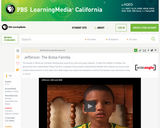
The challenges of growing up in one of Brazil's largest favelas (shantytowns) are the focus of this Wide Angle video.
- Subject:
- Education
- Material Type:
- Lecture
- Provider:
- PBS LearningMedia
- Provider Set:
- Teachers' Domain
- Date Added:
- 08/22/2008

The challenges of growing up in one of Brazil's largest favelas (shantytowns) are the focus of this Wide Angle video.
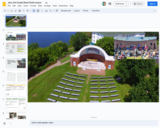
This resource consists of a set of slides for a 3rd grade math task designed to include Math Modeling routines as outlined by Dr. Suh's EQSTEMM Project.
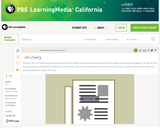
In this interview transcript from People's Century, northern civil rights activist and Freedom Rider Jim Zwerg describes his experiences.
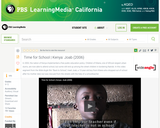
This video from Wide Angle profiles Joab, a boy from Kibera, Kenya, who has returned to school after dropping out following his mother's death. Joab is chosen class prefect by the other students.
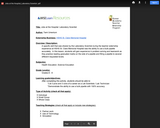
A specific skill that was shared by the Laboratory Scientist during the teacher externship experience at HSHS St. Clare Memorial Hospital was the ability to use a bulb pipette accurately. In this lesson, students will gain experience in problem solving and teamwork as they practice reading graduated marks on the side of a pipette and filling a pipette to several different requested levels.
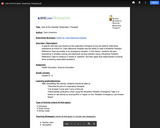
A specific skill that was shared by the respiratory therapist during the teacher externship experience at HSHS St. Clare Memorial Hospital was the ability to read a Broselow Pediatric Reference Tape accurately in an emergency situation. In this lesson, students will gain experience in problem solving and teamwork as they practice using a Broselow Pediatric Reference Tape to measure a variety of “patients” and then apply that measurement correctly when answering associated questions.
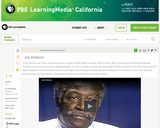
In this oral history from the Birmingham Civil Rights Institute, Joe Dickson recalls student activism at Miles College.
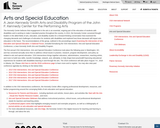
This resource offers ongoing professional development, resources, and further programming around the converging fields of arts education and special education. Includes reseources for educators and parents, webinars, professional papers and an extensive bibliography of journal articles on arts education and special education.
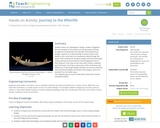
Student teams are challenged to design models of Egyptian funerary barges for the purpose of transporting mummies through the underworld to the afterlife. Planning the boat designs requires an understanding of ancient culture and beliefs so the mummies are transported safely through the perils of the underworld. Students design and build prototypes using materials and tools like the ancient Egyptians had at their disposal. Then they do the same with modern materials and techniques, forming an awareness of the similarities and differences of the barge designs between the ancient materials and tools (technologies) and today's technologies, which are evolved from the earlier ways.
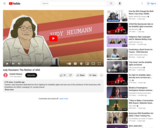
Teacher Judy Heumann dedicated her life to fighting for disability rights and was one of the architects of the Americans with Disabilities Act (ADA), changing U.S. society forever.

Staff members from the School District of Janesville share their experiences and expertise with the management of Title II-A funding.
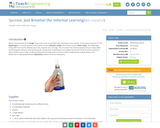
Students build model sets of lungs.
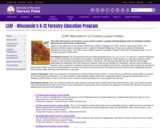
he LEAF Wisconsin K-12 Forestry Lesson Guide includes complete interdisciplinary units for teaching students about forests and forestry in Wisconsin.
Subject areas addressed in the lessons include Arts, English Language Arts, Math, Science, and Social Studies. The Wisconsin Model Academic Standards and H. Gardner's Multiple Intelligences Theory were referenced during the development of the guide. The LEAF Lesson Guide is based on principles outlined in the LEAF Conceptual Guide To K-12 Forestry Education in Wisconsin.
Unit-Based Lessons The unit-based lessons are divided by grade levels: K-1, 2-3, 4, 5-6, 7-8, and 9-12. Lessons build upon one another to provide connectivity in the students' educational experience. When taught as a unit, these lessons provide students a well-rounded understanding of forestry in Wisconsin. You may find that they are also effective when taught individually and integrated with other classroom material. Each lesson includes an introduction, step-by-step procedure for activities, and a conclusion. Formative assessment is woven throughout each lesson. Questions with answers are provided to help teachers follow the level of understanding of students. Summative assessment ideas are listed at the end of each lesson. Suggested activities have students apply what they have learned in a new way.

Kahoot's game-based pedagogy empowers learners to present and share their new-found knowledge to their peers, so they can go from ""learner to leader"". Students in any grade or subject matter may play this game. Students are able to compete with each other through a leader board system while engaging students in the learning process. Educators may design their own games or may borrow an already create game through the public Kahoots.
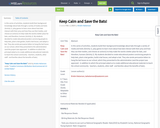
In this series of activities, students build their background knowledge about bats through a variety of media and texts (Activity 1), play games to learn more about how bats interact with their prey and how they use their bodies, and choose an action(s) to help make the world a better place for bats, and therefore, humans (Activity 2). My students decided to create educational posters convincing people to help bats, plant a bat garden, build a bat house, and adopt-a-bat. They also wrote persuasive letters to hang the bat house on our school, which they presented to the administration (and the project was approved - in addition to which the principal asked us to create additional educational materials to teach the school community - teachers, students, other staff - and families about the benefits of bats).
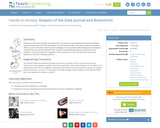
Students journal their thoughts and responses to the questions associated with the grand challenge question presented in the associated lesson. For the Generate Ideas" step, they answer the questions: "What are your initial ideas about how this challenge can be answered? What background knowledge is needed? Have you tried this before?" After students have individually written responses to these questions, the class brainstorms together to reach consensus on the main ideas that need to be explored to solve the challenge question.
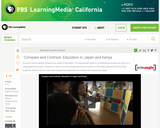
This Wide Angle video segment provides a comparison of two classrooms in the state-supported free primary schools of Japan and Kenya.

61 million adult Americans live with some sort of physical, sensory, or intellectual disability. When parents receive the news—prenatally or postnatally—that their child may have some form of a chromosomal difference or intellectual disability, it’s key that healthcare providers relay this diagnosis in a way that’s respectful to the family and those who live with these disabilities every day.
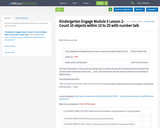
This is the template used by MAPS educators to create math lessons for OER.